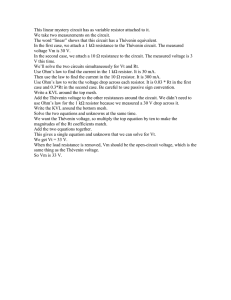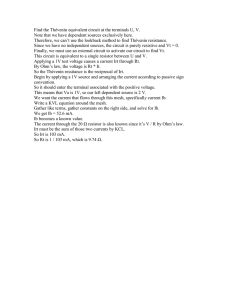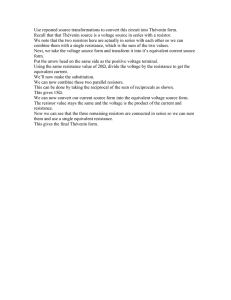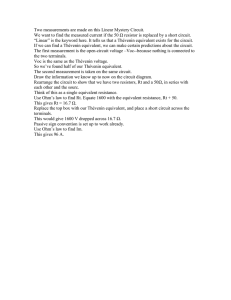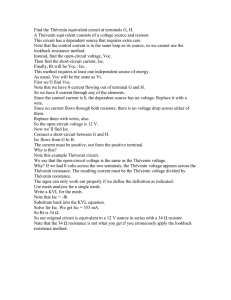Find the Thévenin equivalent circuit at the terminals S,T.
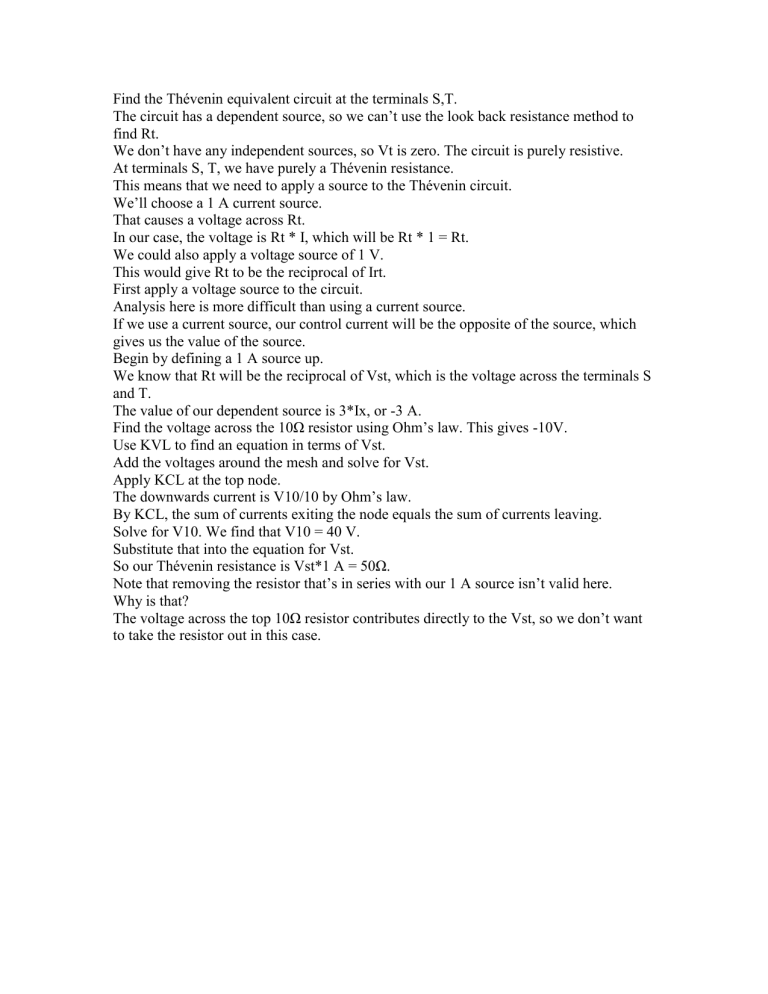
Find the Thévenin equivalent circuit at the terminals S,T.
The circuit has a dependent source, so we can’t use the look back resistance method to find Rt.
We don’t have any independent sources, so Vt is zero. The circuit is purely resistive.
At terminals S, T, we have purely a Thévenin resistance.
This means that we need to apply a source to the Thévenin circuit.
We’ll choose a 1 A current source.
That causes a voltage across Rt.
In our case, the voltage is Rt * I, which will be Rt * 1 = Rt.
We could also apply a voltage source of 1 V.
This would give Rt to be the reciprocal of Irt.
First apply a voltage source to the circuit.
Analysis here is more difficult than using a current source.
If we use a current source, our control current will be the opposite of the source, which gives us the value of the source.
Begin by defining a 1 A source up.
We know that Rt will be the reciprocal of Vst, which is the voltage across the terminals S and T.
The value of our dependent source is 3*Ix, or -3 A.
Find the voltage across the 10Ω resistor using Ohm’s law. This gives -10V.
Use KVL to find an equation in terms of Vst.
Add the voltages around the mesh and solve for Vst.
Apply KCL at the top node.
The downwards current is V10/10 by Ohm’s law.
By KCL, the sum of currents exiting the node equals the sum of currents leaving.
Solve for V10. We find that V10 = 40 V.
Substitute that into the equation for Vst.
So our Thévenin resistance is Vst*1 A = 50Ω.
Note that removing the resistor that’s in series with our 1 A source isn’t valid here.
Why is that?
The voltage across the top 10Ω resistor contributes directly to the Vst, so we don’t want to take the resistor out in this case.

